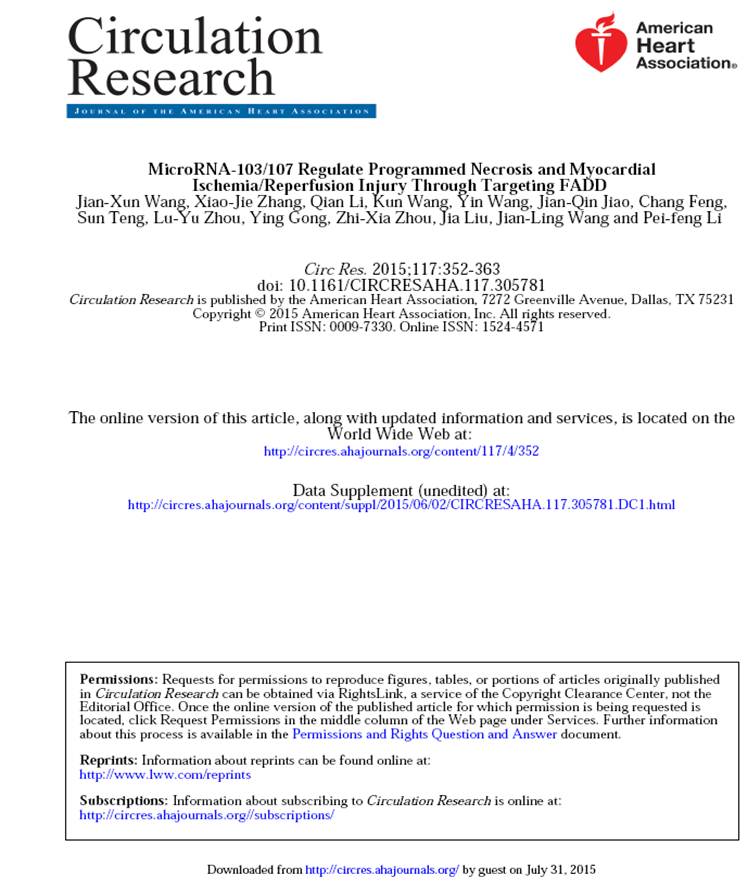Recently, our Institute published the latest research results on the regulation of cardiomyocyte necrosis signaling pathways in Circulation Research. Cardiomyocyte death is the cytological basis of many cardiovascular diseases. Cell death includes apoptosis and necrosis. In the past, it was believed that apoptosis was regulated by signal pathways, while necrosis was not regulated by signal pathways, and it was a passive form of cell death. Recent studies have found that cell necrosis is also regulated by signal pathways, involving regulatory molecules, such as protein kinases RIP1 and RIP3, which are called programmed cell necrosis or necroptosis. The signal pathways that regulate programmed cell necrosis have rarely been studied in heart diseases.
Our research found that the Fas-related death functional domain protein (miR-103/107-FADD ()-RIP1/RIP3), which is a new signaling pathway involved in the regulation of cardiomyocyte necrosis signaling pathway. FADD inhibits the formation of the RIP1/RIP3 complex by binding to RIP1, thereby inhibiting myocardial cell necrosis. During myocardial infarction and H2O2-induced myocardial necrosis, the expression level of miR-103/107 increases, which promotes the occurrence of cardiomyocyte necrosis by targeting the expression of FADD. Furthermore, at the animal level, we found that inhibiting the expression of endogenous miR-103/107 in the heart could inhibit ischemia-reperfusion-induced myocardial cell necrosis and myocardial infarction, as well as cardiac inflammation, myocardial fibrosis, and cardiac structure remodeling, thereby improving heart function.

Published in Circulation Research, these results not only revealed a new molecular mechanism of myocardial infarction but also provided new targets for the prevention and treatment of myocardial infarction. This study also revealed the molecular mechanism of myocardial cell necrosis and provided a new theoretical basis for the development of the treatment of heart diseases.